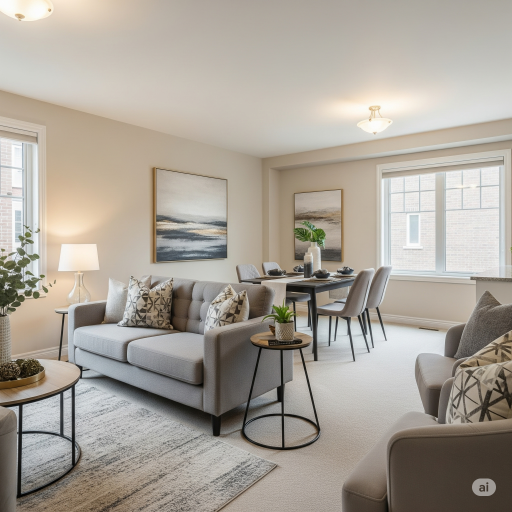Description
Professional house staging is rapidly gaining traction in Kenya’s dynamic real estate market. As competition intensifies, developers and homeowners are leveraging staging to differentiate properties and maximize their appeal. This strategic investment transforms vacant or occupied spaces into aspirational homes, allowing potential buyers to visualize themselves living there. Benefits include faster sales, higher selling prices, and increased online engagement through captivating photography.

Home staging is called that because it involves “setting the stage” for potential buyers, much like a theatrical production. It’s about arranging furniture, decor, and lighting to highlight a home’s best features and create an aspirational atmosphere, allowing buyers to envision themselves living there. The goal is to make the property a desirable “set” for their future life.
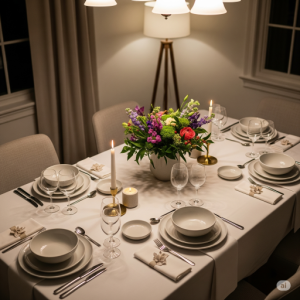
Stagers provide objective expertise, decluttering, tasteful furnishing, and highlighting key features, making a property truly stand out and offering a significant return on investment in the Kenyan market.
Why Professional House Staging is Valued in Kenya:
Competitive Market
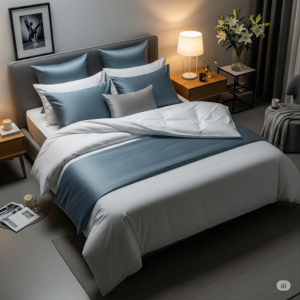
Nairobi’s real estate market is fiercely competitive, with a constant influx of new listings. Professional house staging is crucial here because it allows properties to stand out. By creating a compelling visual and emotional appeal, staged homes capture buyer attention, enabling them to envision themselves in the space and encouraging quicker, more competitive offers.
Improved Property First Impressions
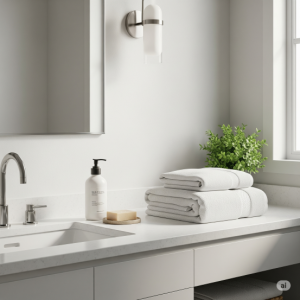
Buyers often form an opinion about a home within seconds of seeing it, whether online or in person. Staging interior design creates an immediate “wow” factor, making the home more attractive and memorable. This initial appeal is crucial for generating interest and drawing in more potential buyers.
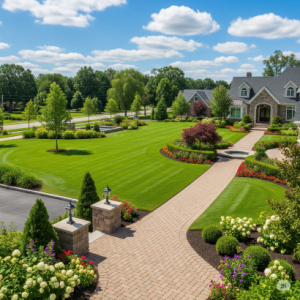
House Aesthetic Appeal for Online Listings
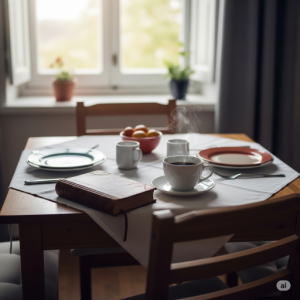 In today’s digital age, the journey to a new home almost always starts online. With countless listings available, a property’s visual appeal is paramount to capturing attention. Professionally staged homes, especially in urban centers like Nairobi, translate into stunning, high-resolution photographs that jump off the screen. These captivating images create an immediate emotional connection with potential buyers, allowing them to envision themselves in the space. The result? More clicks, increased inquiries, and a significantly higher chance of securing a showing, ultimately leading to a faster and more profitable sale.
In today’s digital age, the journey to a new home almost always starts online. With countless listings available, a property’s visual appeal is paramount to capturing attention. Professionally staged homes, especially in urban centers like Nairobi, translate into stunning, high-resolution photographs that jump off the screen. These captivating images create an immediate emotional connection with potential buyers, allowing them to envision themselves in the space. The result? More clicks, increased inquiries, and a significantly higher chance of securing a showing, ultimately leading to a faster and more profitable sale.
Demonstrating Potential (especially for new developments)
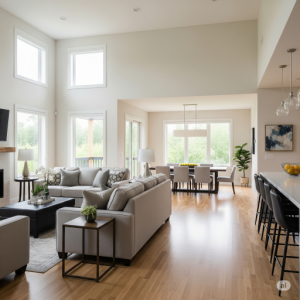
For new developments, often presented as empty shells, professional staging is invaluable. In a bustling market like Nairobi, buyers struggle to envision an unfurnished space as a home. Stagers expertly furnish and decorate these properties, transforming cold, vacant rooms into warm, inviting living areas. This allows potential buyers to see the layout’s functionality, understand spatial relationships, and imagine their furniture and lifestyle fitting seamlessly within the space. By demonstrating the true potential and liveability of an apartment, staging helps accelerate sales and can even justify higher asking prices for developers.
Faster Property Sales and Higher Prices
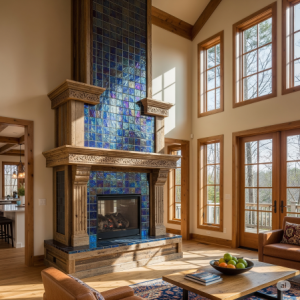
Professionally staged homes consistently outperform unstaged ones, selling faster and often achieving higher prices. This isn’t just a global phenomenon; it’s increasingly evident in Kenya, particularly in competitive markets like Nairobi. Buyers here are becoming more sophisticated, seeking move-in-ready properties that offer an aspirational lifestyle. Staging taps into this desire, enabling buyers to emotionally connect with a home and envision their future within its walls. This translates into quicker decisions, stronger offers, and ultimately, a more profitable outcome for sellers. It’s an investment that typically yields a significant return, often far exceeding its initial cost.
Professional House Staging Avoids Property Price Reductions
Staging a home proactively avoids the costly predicament of having to make price reductions. By presenting the property in its absolute best light from the moment it hits the market, sellers immediately capture buyer interest and enthusiasm. This strong initial impression minimizes the chances of the home languishing on the market, which often signals to potential buyers that something is wrong, leading to lower offers. A well-staged home commands its asking price, negating the need for subsequent, usually significant, price drops that erode a seller’s hard-earned equity and can be financially painful.
Objective Perspective of Professional Home Staging
Selling a home can be deeply personal, with sellers often holding strong emotional attachments and biases towards their decor choices. This can inadvertently hinder a quick sale, as personal tastes may not appeal to a wide array of potential buyers.
This is where professional house staging offers invaluable objectivity. A stager brings an impartial, expert eye, quickly identifying areas that might deter buyers, be it clutter, outdated paint colors, or an overly personalized aesthetic. They then style the home to appeal to the broadest possible demographic in Kenya’s competitive market, focusing on creating a neutral, inviting, and aspirational space. This depersonalization allows buyers to envision themselves living there, free from the seller’s imprint, ultimately expediting the sale.
Expertise and Inventory
Professional stagers have the design expertise, knowledge of market trends, and an inventory of furniture and decor that most homeowners do not. This allows them to create a cohesive and appealing look without the seller having to purchase new items.
Targeted Home Staging
Savvy stagers in Kenya possess a keen understanding of the local market’s diverse buyer demographics. They don’t employ a one-size-fits-all approach. Instead, they tailor their staging to resonate with specific groups.
For young professionals, they might emphasize a home office, smart home features, and a trendy, minimalist aesthetic. For families, the focus shifts to creating inviting living areas, functional kitchens, and well-organized children’s rooms or play spaces. Expatriates often seek properties with modern amenities, strong security features, and a blend of local charm with international comfort. Investors, on the other hand, might be more interested in demonstrating the property’s rental potential, durability, and low maintenance. This targeted approach ensures the home appeals directly to its most likely buyer, maximizing its appeal and market value.
Professional Home Staging Return on Investment (ROI)
While there’s an upfront cost associated with home staging, it’s generally considered an investment rather than an expense. Studies often show a significant return on investment, with the increase in sale price typically far exceeding the staging costs.
The Real Estate Staging Association (RESA) reported an average return of $23.34 for every $1 invested in professional staging in Q1 2025, with an average over-list price of $56,000 for an average staging investment of $3,588.
Some sources claim that the ROI can be as high as 586% or even higher.
This is largely because staging helps buyers emotionally connect with a space and visualize it as their future home, leading them to perceive greater value.
Types of Professional Home Staging Services Available in Kenya
Professional stagers in Kenya typically offer a range of services:
Occupied House Staging (Consultation & Hands-On)
For homes where the owner is still living there. This usually involves:
Initial House Staging Consultation
An initial home staging consultation is the foundational step in preparing a property for sale. During this vital walk-through, a professional stager meticulously assesses the home through a buyer’s eyes. We provide expert recommendations covering everything from strategic decluttering and depersonalizing personal items to a deep clean. The stager also identifies minor repairs that will yield a significant return and suggests optimal furniture arrangements to maximize space and flow. And pinpoints specific decor items to remove or add, ensuring the home appeals to the broadest possible market. As well as looks its best for listing photos and showings.
Hands-On Home Staging
“Hands-on staging” involves a professional stager working directly with the homeowner’s existing furnishings. Instead of completely emptying and refurnishing a home, the stager strategically rearranges furniture for optimal flow and visual appeal, often moving pieces between rooms or into storage. They then enhance the space by bringing in select supplemental decor, artwork, and accessories. This approach effectively depersonalizes the home while highlighting its best features, creating a cohesive and inviting atmosphere that appeals to a broader range of potential buyers without the higher cost of a full vacant stage.
Vacant House Staging (Full or Partial)
Vacant house staging, whether full or partial, is arguably where professional stagers demonstrate their greatest impact. Empty properties, common in new developments or when sellers have already moved, can feel cold, small, and uninviting, making it incredibly difficult for buyers to visualize living there. Stagers transform these blank canvases by bringing in furniture, lighting, artwork, and accessories. This defines spaces, provides a sense of scale, highlights the home’s best features, and creates an aspirational lifestyle that emotionally connects with potential buyers, ultimately leading to faster sales and higher offers.
Full Home Staging
Full staging involves a comprehensive transformation of a vacant or largely unfurnished property. The professional stager orchestrates the delivery and arrangement of all essential elements to completely furnish key rooms, creating a cohesive and inviting living experience. This includes bringing in appropriate furniture for the living room, dining room, and master bedroom, carefully selected rugs to define spaces, and strategic lighting to enhance ambiance and highlight features. Artwork and accessories are meticulously chosen to complement the home’s style and appeal to a broad range of potential buyers. The kitchen, often a focal point, receives special attention with countertop decor, linens, and subtle touches that convey a sense of warmth and functionality. The goal of full staging is to allow buyers to walk into a completely imagined space, envisioning their life there without needing to mentally fill in blanks, thereby increasing perceived value and desirability.
Partial Home Staging
Partial staging is a more targeted approach, designed to maximize impact while remaining mindful of budget constraints. Instead of furnishing every room, the stager focuses strategically on the most critical areas that heavily influence a buyer’s decision. These typically include the main living room, the master bedroom, and often the dining area or kitchen. The philosophy here is to create strong visual anchors in these key spaces, providing enough context and appeal to help buyers understand the scale and flow of the home. The stager might bring in a few key furniture pieces, combined with essential rugs, artwork, and accessories, to define these important zones. This method offers a significant return on investment by addressing the most impactful areas, drawing attention to the home’s strengths, and making it feel more habitable and aspirational without the comprehensive investment of a full stage.
Virtual Home Staging
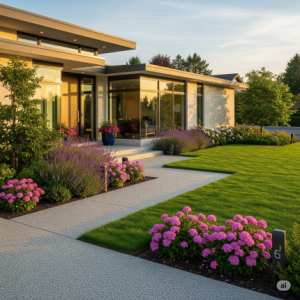
This is a digital solution where photos of empty rooms are digitally enhanced with furniture and decor. Virtual staging is a cost-effective option, particularly useful for developers with many units, allowing buyers to visualize different layouts or styles. However, potential buyers must be aware that it’s virtual staging to avoid feeling “catfished” when they view the physical property.
Curb Appeal Enhancement
We often include recommendations for improving the exterior, as this is the first impression. This can involve landscaping, painting the front door, or adding inviting elements.
Photography Coordination
We work closely with professional real estate photographers to ensure the staged spaces are captured optimally for online listings.
Cost of Professional House Staging in Kenya
Choosing your professional home stagers
Choosing the right professional house staging service is paramount to showcasing your home’s best features and attracting potential buyers. With the goal of a quicker sale and a higher asking price, a well-executed staging strategy can significantly impact a buyer’s perception.
Begin your evaluation by researching local staging companies. Look for portfolios that demonstrate a diverse range of styles and successful transformations. Pay close attention to their experience with properties similar to yours in terms of size, age, and target market. Client testimonials and online reviews offer valuable insights into their professionalism, reliability, and communication.
Once you’ve shortlisted a few, schedule consultations. A reputable stager will visit your home to assess its unique characteristics, discuss your goals, and provide a tailored proposal. This proposal should clearly outline their services, including furniture rental, decluttering, depersonalization, and potential minor repairs or paint recommendations. Inquire about their inventory, design philosophy, and how they stay current with market trends.
Cost is a factor, but it shouldn’t be the sole determinant. Compare proposals thoroughly, understanding what each package includes. A higher upfront investment in quality staging can often translate to a much greater return when your home sells. Ultimately, select a service that aligns with your vision, inspires confidence, and demonstrates a clear understanding of how to highlight your home’s strengths to potential buyers.

